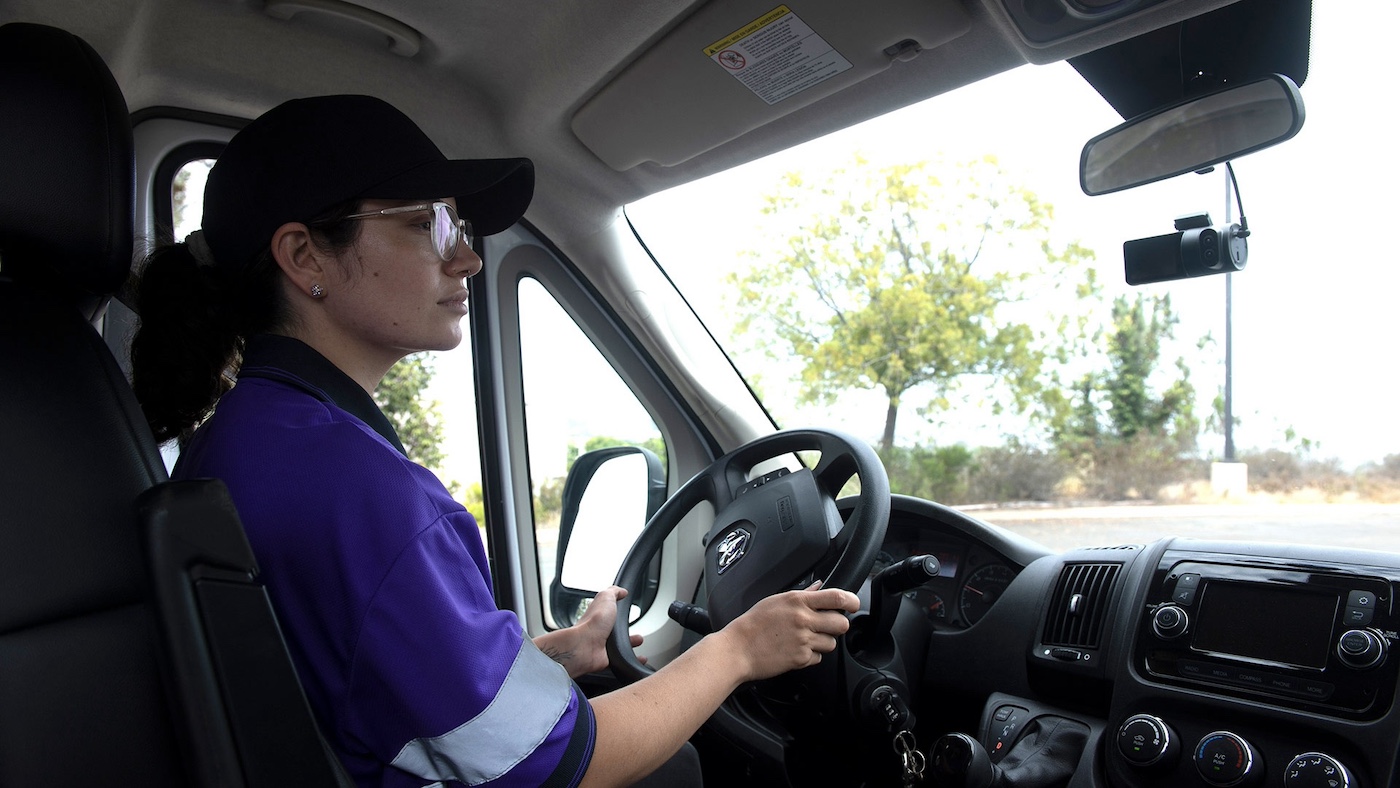Driving Sustainability: How Fleets Can Empower Drivers for a Safer, Greener Future

Drivers have a vital role to play in the decarbonization of fleets. Their engagement and their driving skills are fundamental not only to the safety of goods, vehicles and lives, but also for the efficient operation of vehicles. In all new technological initiatives, their goodwill and co-operation is essential, so fleets need to take care to treat them well, train them correctly and keep them safe.
The International Road Transport Union (IRU) has reported that nearly two-thirds of the CO2 emission reductions required to meet Net Zero by 2050 can be achieved through energy savings. This includes measures such as more efficient vehicles and optimized logistics, but also driver training.
Our own report, The Road to Sustainability: Why Efficiency is the Key, discusses these findings and shares the latest thinking among fleets worldwide about the most effective measures for decarbonization. Here we have summarized some of the ways in which fleets can work with their drivers to ensure a safer, greener future.
Efficient driving practices
Vehicle idling, inefficient route planning, and poor driving habits can all increase emissions while consuming greater amounts of fuel and driving up costs. Conversely, with electric and hybrid vehicles, the right braking techniques can play an important role in extending battery range. New advanced technologies also can help: route optimization technology can be employed to plan itineraries and to track vehicles, while intelligent video telematics can improve the effectiveness of driver training, which is the key to better driving and improved safety.
The most advanced video telematics systems include intelligent cameras which deploy artificial intelligence (AI) and capture footage from inside the cab when triggered. Examples of triggers include the AI’s identification of risky behavior, such as the use of a mobile phone or smoking while driving, or a sudden change in vehicle direction or the harsh application of brakes detected by the telematics system. The video footage allows the driver to review what they were doing when the incident occurred – such as leaving the engine running while stopping for a chat on the phone – helping them to understand and correct that behavior. It also gives fleet managers the information they need to provide targeted training.
In 2022, Lytx’s video technology helped our own clients to reduce idling times by an average of 16%, which equated to 41 million kilogrammes of CO2 emissions and $24 million in fuel costs.
Vehicle health
A well-maintained vehicle will consume less fuel and emit fewer emissions. It’s estimated that the carbon emissions involved in repairing damaged freight transport is more than 9 million tonnes of CO2 per year in the UK alone.
Some fleets are now using advanced technologies to issue alerts when parts need replacing or are nearing the end of their useful lives. This means that action can be taken early, before a faulty part causes further damage. Prevention is better than cure, however, and the way a vehicle is driven can contribute greatly to its health. One example is the degradation of tires caused by sharp cornering or excess speed, which causes air pollution as well as engine wear. Rough steering and braking also cause damage – both of these are liable to wear out parts and make the vehicle less efficient. Once again, driver training is key.
Accident prevention
The final area of focus for a sustainable fleet has to be safety. Protecting drivers and other road users must always be top priority but fleets also need to consider that an accident that results in the loss of a vehicle is also a disaster both financially and in terms of carbon emissions. If the vehicle is electric, the environmental impact is even more serious because achieving net energy savings in EVs can take a number of years. Financial costs not only include repairs and replacements, and possibly a replacement driver in the case of injury, but also the increased insurance premiums that are likely to result.
Here, intelligent video telematics can go further than training alone. In addition to simply recording instances of risky behaviors, the newest intelligent cameras can send a live alert to the driver when danger is detected. This enables the driver to self-correct instantly, before an incident occurs.
With an estimated 42% of commercial fleet vehicles involved in 1-5 accidents per year, intelligent cameras need to be a top priority for fleets.
Better drivers, better fleet, better world
Our customers are increasingly talking about moving beyond Net Zero to Destination Zero. Destination Zero is about eliminating not only emissions, but also incidents and congestion on the roads.
At Lytx®, we believe that these things are inseparable. We also recognize that technology has a significant part to play in reaching Destination Zero. Looking ahead, it won’t be long before we see fleets sharing their insights into what’s happening out on the roads, whether that’s a traffic jam, an accident, or a pothole. Routes will increasingly be planned and adjusted automatically, and vehicles will be able to communicate even more effectively about both their whereabouts and their health. Fully autonomous vehicles are still a long way off, however. For the foreseeable future, therefore, the success of fleets is still all about our drivers.
